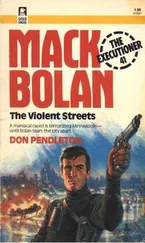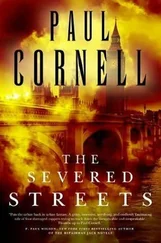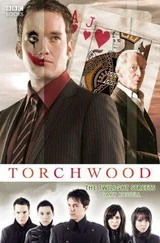He graduated from the academy in March 1976 and went to the Central, but even then he was thinking seriously about a law degree, maybe even a prosecutor’s salary-an alternative that Catherine, his wife, readily encouraged. McLarney enrolled in the University of Baltimore law program about the same time that his sector sergeant paired him with Bob McAllister in a two-man car on the Pennsylvania Avenue post. It was a bizarre, schizophrenic existence: days spent in a freshman law class discussing torts and contracts, nights spent handling calls in the Lexington Terrace and Murphy Homes, the city’s worst high-rise projects. On a post where every other incident seemed to call for nightsticks, both men learned that they could fight when fighting was the order of the day. The west side high-rises were a world unto themselves, eight towers of decay and despair that served as the city’s twenty-four-hour supermarket for heroin and cocaine. And, as if the terrain wasn’t bad enough, the two men were together throughout the ’79 riots, an event known to BPD veterans as simply the Winter Olympics, when a snowbound Baltimore was robustly looted by its inhabitants. It was McAllister who kept them on an even keel; more often than not he was the calming influence, the voice of reason. In the early morning hours, the two would park the car in a Central hole, where McAllister would read McLarney questions from a legal text, bringing him back to earth after a long night in the projects. Quiet, sensible and self-mocking, Mac was the bridge between worlds, the only thing that stopped McLarney from getting up in a second-year law class to explain that Plaintiff A was trying to fuck over Defendant B and that Judge C should have both of them locked up if they don’t cut the shit.
Both men eventually took the entrance test for the Criminal Investigations Division. McAllister was sick of the projects and wanted, more than anything else, to get to homicide, but death investigation held little appeal for McLarney. He wanted simply to be a robbery detective, for the childlike reason that even after two years on the street, he viewed armed robbery- “You’re short on cash, so you go to a bank with a gun and just take it?”-as truly amazing, a comic book concept.
Both scored high on the CID exam for two years running, but when positions finally opened up, Mac had to settle for burglary while McLarney eventually landed in the homicide unit by way of the police academy, where he did a brief stint as a legal instructor. To his surprise, he immediately fell in love with homicide-the work, the people. It was an elite unit, an investigative unit-the best in the department-and McLarney had always imagined himself as an investigator. The Maryland bar exam and a legal career were both dim memories from the moment he was handed a detective’s shield and assigned a desk.
Then, after two of the happiest years of his life, McLarney made what he later considered his gravest mistake: He passed the sergeant’s test. The stripes on his sleeve brought a slightly better pay scale and a transfer to the Western, where they gave him Sector 2 and a squad of fresh-faced, healthy kids to fill the radio cars, twenty-three- and twenty-four-year-old specimens who made him feel like a fossil at the advanced age of thirty-one. Suddenly it was McLarney who had to be the calm, reasoned one. Every night for his two years as a sector sergeant, he would assign the cars and send his flock out into a violent, unforgiving section of the city, a district where a man trusted no one but himself and the others on his shift. Too much happened too quickly in the Western, where every uniform spent the shift alone in a one-man car, dependent on his side partners to hear his call, to get there in time, to keep control.
McLarney came to differentiate the weak from the strong, those who would fight and those who would not, those who knew the street and those who were casualties waiting to happen. Pope, a good man. Cassidy, very good. Hendrix, a fighter. But McLarney knew others shouldn’t be out there, and yet the same post cars had to be filled. Every night he would spend an hour or two racing through the required paperwork, then take his own car out into the sector and roam for the rest of the shift, trying to back every call. McLarney spent those two years wondering, not whether one of his men would fall, but how it would happen. In the Western, a cop didn’t have to screw up to get hurt, and McLarney wondered if that was how it would be. Or would that godawful moment involve a man who lacked the training, who couldn’t control his post, who should never have been in the goddamn car. Above all, McLarney wondered whether it would be something he could live with.
The day, when it came, was beautiful, the first day of September in fact. McLarney remembered the weather because it marked the end of another Baltimore summer, and he hated wearing the Kevlar vest in higher temperatures. He heard the radio call while checking the city pumps on Calverton, several blocks farther west, and he hit the bluetop and raced across Edmondson, arriving in the neighborhood about the same time as a second call for a sighting of the suspect on Bentalou. McLarney tried the first cross street north, rolling slowly. On a shaded porch in the middle of the block, an old couple sat quietly, and when McLarney looked at them, they both turned their eyes to the ground. Maybe they just didn’t want to talk to a police; then again, maybe they had seen something. McLarney got out of the car and walked to the porch, where the old man greeted him with a strange, pensive expression.
“You didn’t see a man run by here, did you? The gas station got robbed.”
The old man seemed to know about the gas station and mentioned almost casually that he had seen a man run down the street, fall, get up again and dart around the corner into a thick clump of bushes.
“Those bushes there?”
From the porch, McLarney couldn’t see very much at all. He called for a backup; Reggie Hendrix showed first. McLarney watched his officer walk up an incline into the corner lot and yelled for him to be careful, the suspect might still be in the bushes. Both men had their revolvers out as another resident came off his front porch to ask what was going on, and McLarney turned away to order the man back inside.
“There he is,” shouted Hendrix.
McLarney couldn’t see. He ran up the small incline toward the other officer, figuring that the best thing to do was to stay close to Hendrix so that the suspect couldn’t get between them.
Hendrix kept shouting, but McLarney saw nothing until the man was already out in the open, moving fast across the yard but still facing them. McLarney saw the gun, saw the man shooting, and began firing back. Hendrix fired as well. This is bizarre, thought McLarney, somehow detached, marveling that they seemed to be just standing there shooting each other-which was, in fact, exactly what they were doing. He felt both bullets hit, each one knocking him a bit, and at almost the same moment watched the other man flinch and stagger down the incline toward the street.
McLarney turned and tried to run back across the yard, but his leg was useless. He had fired four and was now stumbling toward the street, where he expected to let the last two go in whatever direction the gunman happened to be running. But when McLarney came down the incline, he saw the man stretched out on the sidewalk, silent, his gun on the pavement near him. McLarney staggered down to the sidewalk and lay down on his stomach a few feet away. He kept one arm outstretched, the gunsight aimed at the other man’s head. Next to him on the pavement, the gunman looked over at McLarney and said nothing. Then he lifted his hand enough to manage a weak, waving motion. No more, it said. Enough.
Half the Western was standing over them by then and McLarney let go of his own gun when he saw Craig Pope’s.38 in the other man’s face. Then came the pain-sharp, shooting pain in his abdomen-and he began to wonder where he’d been hit. The leg was fucked up; but, he thought, what’s a leg? He guessed that the second bullet had caught him in the gut, underneath the edge of the vest. Good again, thought McLarney, nothing vital down there.
Читать дальше












